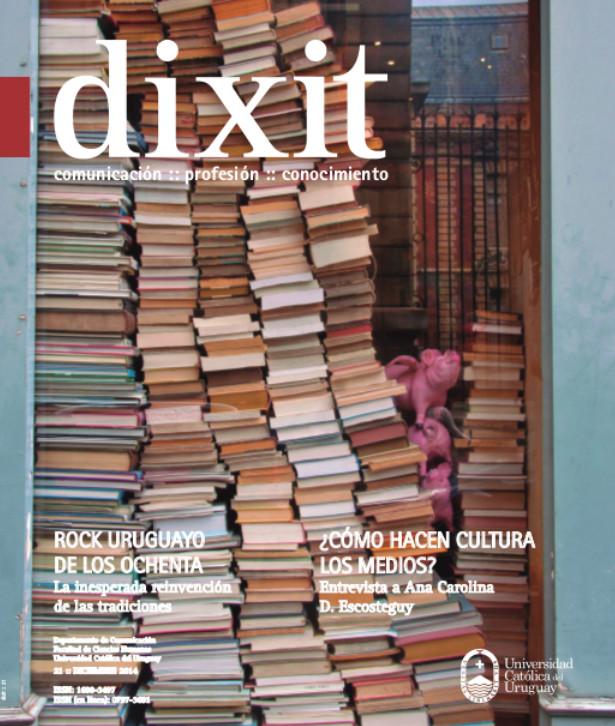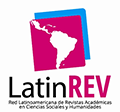Network Theory and Communication phenomena: methodological problems
DOI:
https://doi.org/10.22235/d.v0i21.400Abstract
Development of network theory has advanced in parallel with the massive dissemination of digital networks (Internet and wireless telephony). Using the transdisciplinary approach of this theory, a veritable onslaught of “hard” scientists has been observed in the field of social sciences, more particularly in the study of communication phenomena. While this “hardening” process of social sciences presents, undoubtedly, many positive aspects, at the same time it generates methodological problems as well. That process is briefly described in this article, and some of the problems “hardening” entails are analyzed. The conclusion points to a necessary convergence in traditional research methodologies from both fields, “hard” sciences and social sciences, so that communication research is enabled to jump ahead epistemologically, in order to satisfy the demands of digital networks in the twenty-first century.
Downloads
References
Albert, R., Jeong, H., Barabási, A. L. (1999). Diameter of the World Wide-Web. Recuperado de http://www.barabasilab.com/pubs/CCNR-ALB_Publications/199909-09
Asur, S., Huberman, B. (2010). Predicting the Future With Social Media. Recuperado de: http://www.hpl.hp.com/research/scl/papers/socialmedia
Backstrom, L., Boldi, P., Rosa, M., Ugander, J., Vigna, S. (2012). Four Degrees of Separation. Recuperado de http://arxiv.org/abs/1111.4570
Bakshy, E., Hofman, J., Mason, W., Watts, D. (2011). Everyone's an Influencer: Quantifying Influence on Twitter. Recuperado de research.yahoo.com/files/wsdm333w-bakshy.pdf
Bakshy, E., Rosenn, I., Marlow, C., Adamic, L. (2012). The Role of Social Networks in Information Diffusion. Recuperado de http://arxiv.org/abs/1201.4145
Barabási, A. L. (2002). Linked. Cambridge: Perseus Publishing.
Barabási, A. L. (2010). Bursts. Nueva York: Dutton.
Barabási, A.-L., y E. Bonabeau (2003). Scale-Free Networks. Recuperado de http://icosystem.com/site/wp-content/uploads/SciAm2003.pdf
Castellano, C., Fortunato, S., Loreto, V. (2009). Statistical physics of social dynamics. Recuperado de http://arxiv.org/abs/0710.3256
Cha, M., Haddadi, H., Benevenuto, F., Gummadi, K. (2010). Measuring User Influence in Twitter: The Million Follower Fallacy. Recuperado de an.kaist.ac.kr/~mycha/docs/icwsm2010_cha.pdf
Gomez-Rodriguez, M., Leskovec, J., Krause, A. (2010). Inferring Networks of Diffusion and Influence. Recuperado de http://cs.stanford.edu/people/jure/pubs/netinf-kdd2010
Hilbert, M., López, P. (2012). The World's Technological Capacity to Store, Communicate, and Compute Information. Recuperado de http://www.sciencemag.org/content/332/6025/60
Keller, E. F. (2005). Revisiting Scale-free networks. Recuperado de filer.case.edu/users/ngb4/Fox_Keller_Article.pdf
Leskovec, J., Singh, A., Kleinberg, J. (2006). Patterns of Influence in a Recommendation Network. Recuperado de www.cs.cornell.edu/home/kleinber/pakdd06-cascade.pdf
Leskovec, J., Horvitz, E. (2007). Planetary-Scale Views on an Instant-Messaging Network. Recuperado de http://arxiv.org/pdf/0803.0939v1.pdf
Lewis, R., Reiley, D. (2011). Does Retail Advertising Work? Recuperado de http://www.davidreiley.com/papers/DoesRetailAdvertisingWork.html
Mitchell, M. (2009). Complexity. Nueva York: Oxford University Press.
Plottier, J. L. (2008). Medios de comunicación y teoría de redes. Montevideo: Universidad Católica del Uruguay.
Porter, M., Onnela, J.P., Mucha, P. (2009). Communities in Networks. Recuperado de http://arxiv.org/abs/0902.3788
Szabo, G., Huberman, B. (2010). Predicting the Popularity of Online Content. Recuperado de http://arxiv.org/pdf/0811.0405v1.pdf
Watts, D. (2011). Everything is obvious. Nueva York: Crown.
Watts, D., Dodds, S. (2007). Influentials, Networks, and Public Opinion Formation. Recuperado de research.yahoo.com/files/w_d_JCR.pdf
Willinger, W., Alderson, D., Dyle, J. (2009). Mathematics and the Internet: a Source of Enormous Confusion and Great Potential. Recuperado de http://www.ams.org/notices/200905/tx090500586p.pdf
Wu, S., Hofman, J., Mason, W., Watts, D. (2011). Who Says What to Whom on Twitter. Recuperado de research.yahoo.com/files/twitter-flow.pdf
Yang, J., Counts, S. (2010). Predicting the Speed, Scale, and Range of Information Diffusion in Twitter. Recuperado de www.aaai.org/ocs/index.php/ICWSM/ICWSM10/paper/view/1468/1896
Downloads
Published
How to Cite
Issue
Section
License
Copyright (c) 2014 Dixit

This work is licensed under a Creative Commons Attribution-NonCommercial 4.0 International License.
From issue number 32 onwards all contents are licensed under the Creative Commons Attribution 4.0 International License (CC BY 4.0).
Issues number 29-31 are licensed under the Creative Commons Attribution-NonCommercial 4.0 International License.
The contents corresponding to number 28 and earlier editions are under the Creative Commons Attribution-NonCommercial-ShareAlike 4.0 International License.


















